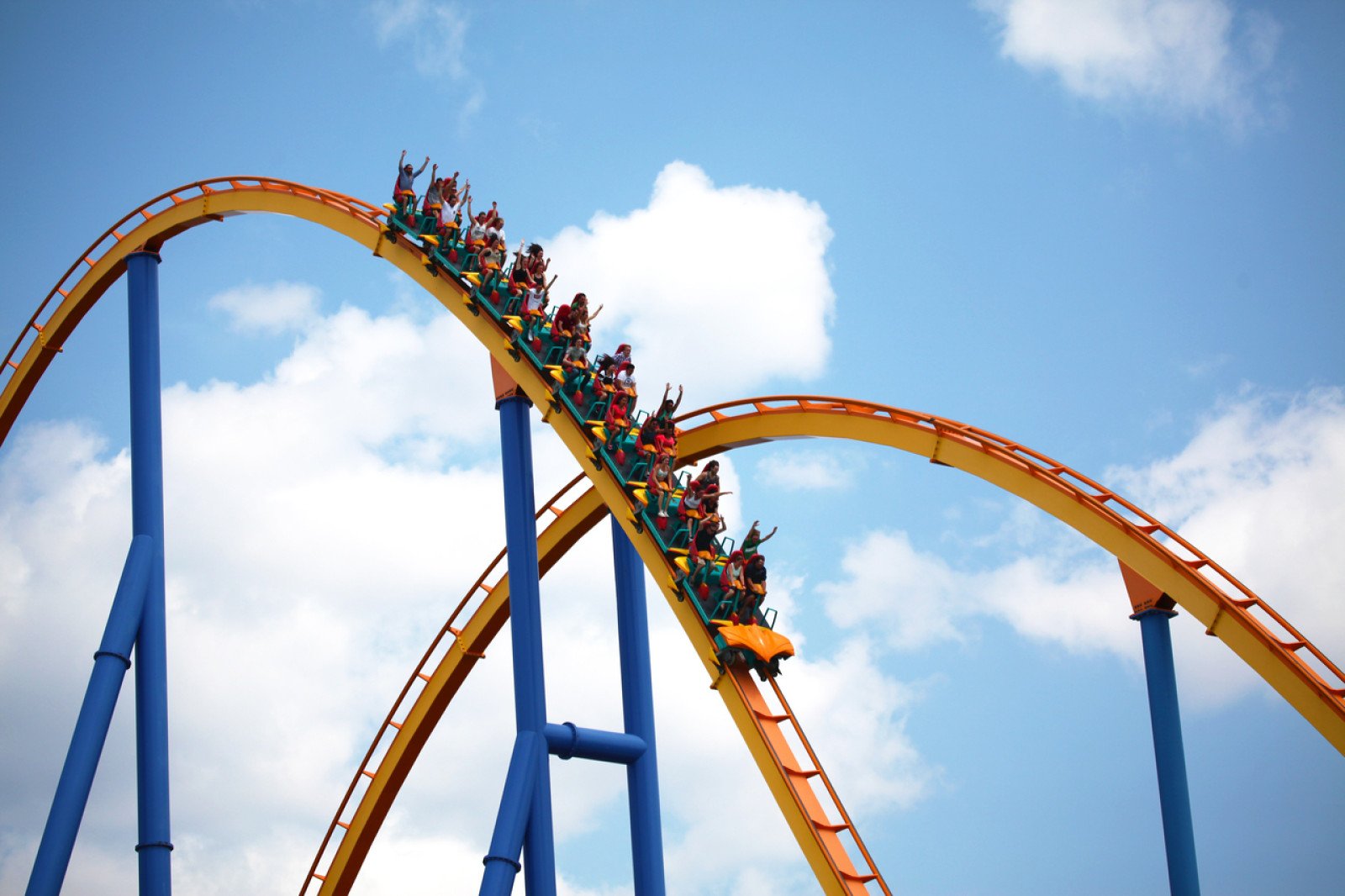Electricity
A potential and kinetic energy challenge
What does a parked car have in common with a jack-in-the-box?

Overview
In this activity, your students are challenged to list as many real-life examples as they can of potential and kinetic energy.
Instructions
What you'll need
- A glass of water
- "What is potential and kinetic energy?" video
What is potential and kinetic energy?
- Show students the "What is potential and kinetic energy?" video.
- Review the examples of potential and kinetic energy from the video, like the rollercoaster and the hydroelectric dam. Ask students to identify which parts of each example were potential and kinetic energy.
A potential and kinetic energy challenge
- Hold a glass of water above a table and ask your students what will happen if the glass is tipped. How does this demonstrate the difference between potential and kinetic energy? Ask students to explain.
- Discuss examples of potential energy being converted to kinetic energy:
- Notice objects in motion (kinetic energy). How is the energy stored when that object isn’t moving?
- Think about a boulder sitting on top of a hill. Just sitting there, the boulder isn’t doing anything. But because it is sitting on a hill, it has the potential to roll down. The total energy stored in that rock is a combination of its size (mass) and its gravitational position.
- Introduce some other examples of potential and kinetic energy:
- A new AA battery
- A parked car
- Riding a motorcycle down the road
- The spring in a closed jack-in-the-box
- Have your class partner up, and have each pair work together to come up with more creative examples of potential and kinetic energy. After a few minutes, start going around the room, having each duo give an example of the two types of energy. As a class, try to come up with 20 or more different examples of each.
Modify or extend this activity
Extension
- Learn more about how energy is related to the concepts of work and power with the "Work, energy, power" activity.
Curriculum Fit
Grade 10 Science
Content
- Law of conservation of energy
- Potential and kinetic energy
- Transformation of energy
Curricular competencies
Questioning and predicting
- Demonstrate a sustained intellectual curiosity about a scientific topic or problem of personal interest
Processing and analyzing data and information
- Experience and interpret the local environment
- Use knowledge of scientific concepts to draw conclusions that are consistent with evidence
Applying and innovating
- Transfer and apply learning to new situations
Communicating
- Express and reflect on a variety of experiences, perspectives and worldviews of place
Assessments
- Assess students on their work in pairs, and on their participation in the class discussion. Notice their understanding of the concepts of potential and kinetic energy, and how well they could explore energy transformation.
Teaching Notes
Energy
Energy is the ability or capacity to do work and is measured in joules (J). Energy can be transformed into another type of energy, but it cannot be created and it cannot be destroyed.
There are many different forms of energy (heat, light, electric, elastic, etc.) but all energy is either potential or kinetic.
- Potential energy is stored energy that is available to do work. It can take forms such as chemical, mechanical, nuclear, gravitational and electrical. Examples include a mobile phone or car battery, a ball sitting on a table or a stretched rubber band.
- Kinetic energy is energy in motion that is actually doing work. It can take forms such as light, heat, motion and sound. Examples include a car in motion, a ball falling off a table or a rubber band flying across the room.






